Don’t believe the media’s latest line that stocks—and by extension 7%+ yielding closed-end funds (CEFs)—are oversold.
Far from it!
Truth is, stocks—and bonds and real estate, for that matter—are still oversold as a result of the 2022 market crash.
You can see that in action in the chart below, with the benchmark ETF for the S&P 500 (in purple) up 11.1% since the start of 2022, while corporate bonds (in orange) are basically flat. And real estate investment trusts (REITs)—in blue—are still in the tank, down about 16%.
Don’t Believe the Hype: All Our Favorite Assets Are Still Cheap
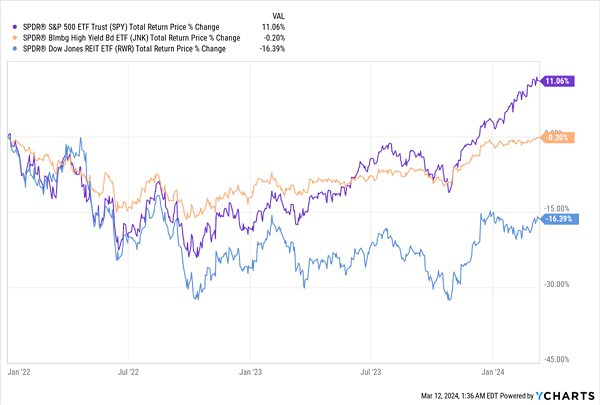
Fact is, those are all low numbers, even for stocks: the S&P 500 is up an annualized 5.4% over the last two years and change since the start of 2022, which marked the beginning of the market’s swan dive.
But over the long term, the S&P 500 rises 8.5% on average per year, meaning stocks are still oversold. And now we’re starting to see that rise spread to more than just tech stocks. As the Wall Street Journal recently stated: “Strong US growth is prompting investors to scoop up a broader set of stocks, rather than just the handful of giant technology companies that drove indexes to record heights.”
I’ve got two CEFs that can get you into stocks, bonds and real estate even cheaper below because they trade at historically low valuations. One is a particularly interesting buy if you’re still not quite convinced stocks are a bargain now.
More on those in a moment. First, let’s dig into why this contrarian opportunity still exists.
Media Hype Overinflated 2022 Fears, Setting Up Our Opportunity
In 2022, I repeatedly wrote that there was no recession coming and advised investors not to sell. But there was a good reason folks may have made that mistake anyway: the media.
Consider a CEF called the Liberty All-Star Growth Fund (ASG), which yields 8% today and has exposure to the best tech stocks, such as Amazon.com (AMZN), as well as retail-oriented stocks, like Visa (V).
It’s been one of a number of CEFs that have been on a tear since Bloomberg called for a 100% chance of a 2023 recession a year and a half ago, with a near-23% total return:
ASG Soars After Wrongheaded Recession Call
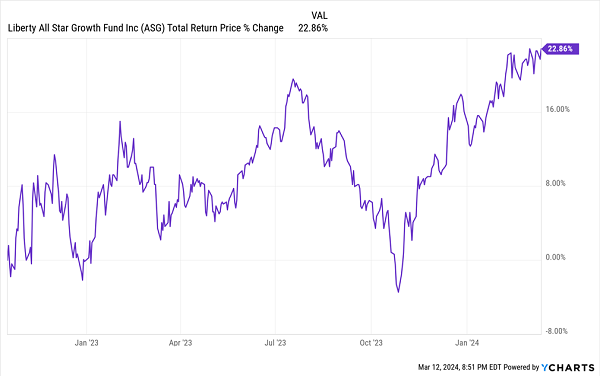
How could so many people (many in positions of power, including Wall Street bankers, the mainstream press, and DC think-tank directors) get it so wrong?
To that point, the Brookings Institute recently published a couple of essays: one entitled “Why Are Americans so Displeased With the Economy,” and another titled “Is the economic news becoming more negative, and does it matter for consumers?”
In them, Brookings says the financial press has gotten consistently and measurably more negative since 2018—a pattern that began in the Trump years and has carried on into President Joe Biden’s four years in office, so this doesn’t seem to be much of a partisan or political trend.
So what’s going on?
The Ad Inflection Point
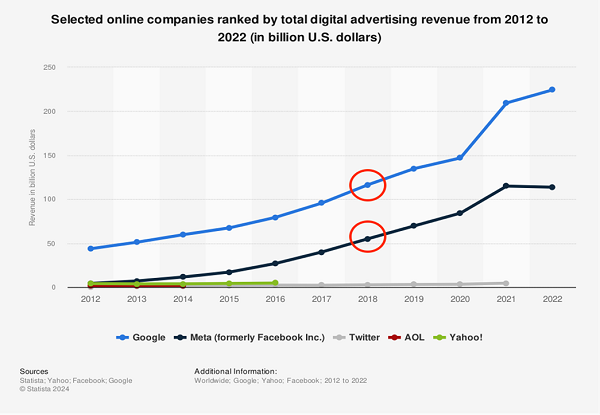
In 2018, Google (GOOGL) and Meta Platforms (META) saw their ad-revenue growth kick into high gear, with $170 billion in earnings between them. That would grow to an astounding $338 billion in 2022. This rapid growth was from advertisers pulling money out of the mainstream financial press and, instead, using that money to advertise with Google, Facebook and Instagram.
This, of course, prompted the media to panic and shift to more negative, and more alarming, headlines to get attention. And this is why the 2022 market panic was an incredible buying opportunity. And the sale isn’t over!
2 CEFs That Are Perfect Plays on (Still) Oversold Stocks, Bonds and REITs
If you’re still concerned about the strength of the market recovery, you can buy a CEF like the Nuveen S&P 500 Dynamic Overwrite Fund (SPXX). As the name suggests, this one holds all the stocks in the S&P 500, like Apple (AAPL), Microsoft (MSFT) and UnitedHealth Group (UNH), much like an index fund.
The difference? SPXX yields an outsized 7.5% today. That huge yield comes to us due in large part to the call options it sells on its portfolio. Under these options, SPXX sells investors the right to buy its stocks at a fixed date in the future, and at a fixed price. No matter how these trades play out, the fund keeps the “premiums” it charges for these options.
That extra funding gives the portfolio downside protection (as SPXX gets more of its return in cash) and drives that bigger dividend, too.
SPXX traded for a premium during the 2022 meltdown, thanks to a hunger for lower-volatility assets. But its discount has dropped to multi-year lows recently, as more investors seek upside. That makes the fund a sweet trade for more cautious investors.
SPXX Gets Cheaper, Upping Its Gain Potential
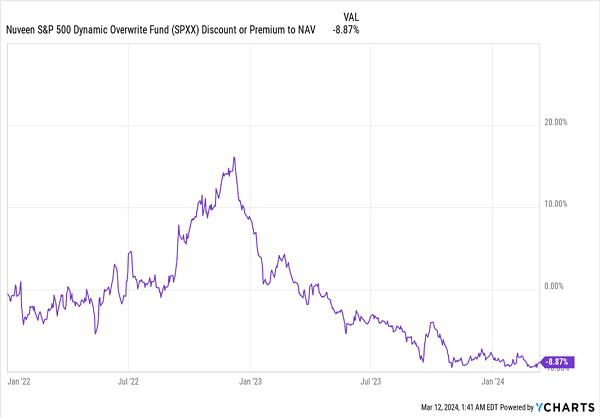
Or, given that corporate bonds and real estate are way behind, consider the Cohen & Steers REIT & Preferred Income Fund (RNP), which combines different types of corporate debt with exposure to thousands of properties through REITs like cell-tower operator American Tower (AMT), warehouse landlord Prologis (PLD) and data-center REIT Equinix (EQIX).
RNP has been catching investor interest, pushing the unusually large discount at which it traded a few months back into premium territory.
RNP Catches a Bid
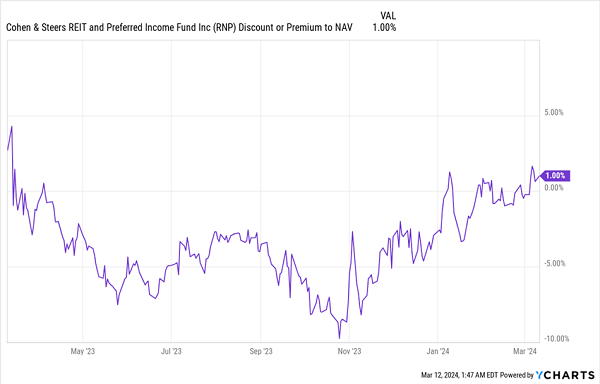
This trend is happening throughout debt CEFs and is likely to continue as the market realizes it has been overindulging in negativity for too long, underpricing both real estate and corporate bonds.
That, by the way, is when we love to buy: when a CEF’s discount (or in this case a small premium) has momentum, but still has room to run.
That’s certainly the case with RNP, as interest rates decline and the fund’s high yield (7.8% as I write this) starts to look more compelling to more investors. So if you buy now, you’re nicely set up to sell at a profit later on. And you’ll collect RNP’s high dividend the whole time.
These 4 Funds Are the ONLY Way to Play AI for Huge 7%+ Dividends
Another big benefit of CEFs is that they can help us tap far more specific sectors than, REITs, S&P 500 stocks and corporate bonds. We can also use them to reap big dividends, and gains, from revolutionary megatrends like artificial intelligence (AI).
In fact, I’ve built a four-CEF “mini-portfolio” that is designed to do just that. The four CEFs inside not only give you access to big-name AI plays like Microsoft (MSFT), but up-and-comers, too, as well as non-tech firms who stand to reap the biggest gains as AI optimizes their operations.
The best part? These 4 AI-Powered funds are still cheap—and between them they crank out a monstrous 7.8% dividend!
